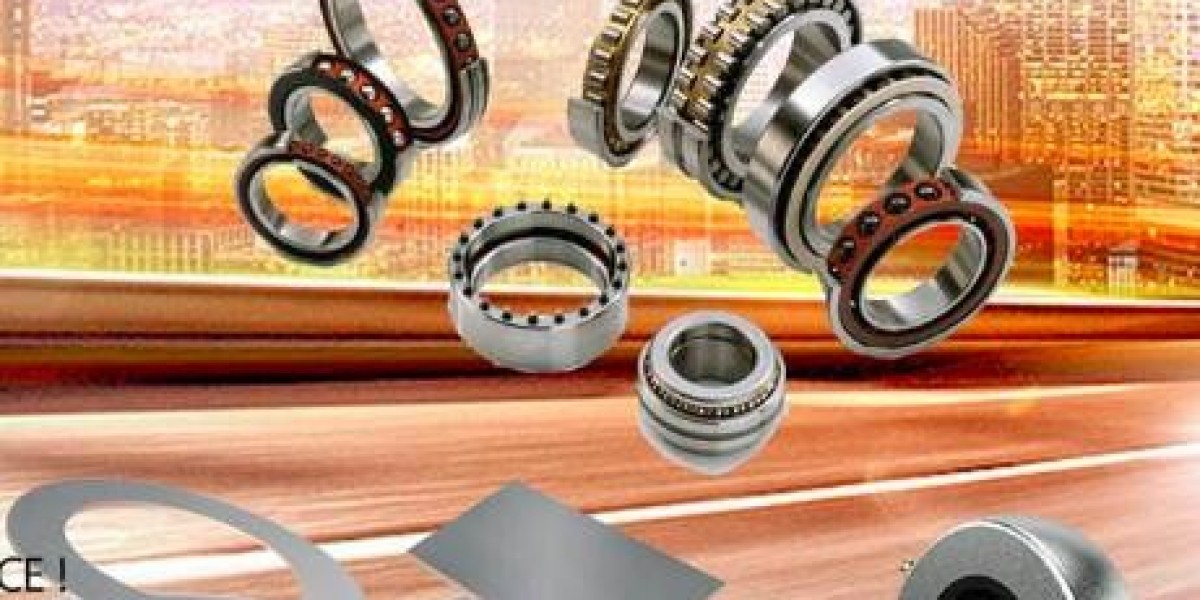INA Bearings, a part of the Schaeffler Group, are renowned for their precision engineering and reliability across a wide range of industrial applications. Despite their high-quality construction, INA bearings, like all mechanical components, can encounter issues over time. Understanding common problems and implementing best practices for maintenance can significantly enhance the performance and longevity of these bearings. This article provides a comprehensive guide on troubleshooting common issues with INA bearings and offers practical advice for effective maintenance.
1. Common Issues with INA Bearings
1.1. Excessive Noise and Vibration
Symptoms: Unusual noises such as grinding, rattling, or whirring, and excessive vibration during operation.
Possible Causes:
- Misalignment: Misalignment of the shaft or housing can lead to uneven load distribution and generate noise and vibration.
- Contamination: Dirt, dust, or debris entering the bearing can cause internal damage and irregular operation.
- Wear and Tear: Prolonged use without proper maintenance can result in wear of rolling elements or raceways, leading to noise and vibration.
1.2. Overheating
Symptoms: Bearings operating at temperatures higher than normal, which can lead to premature failure.
Possible Causes:
- Insufficient Lubrication: Inadequate or degraded lubricant can increase friction and cause overheating.
- High Loads: Operating the bearing under loads exceeding its rated capacity can lead to excessive heat generation.
- Poor Ventilation: Lack of proper ventilation around the bearing can contribute to heat buildup.
1.3. Reduced Performance and Premature Failure
Symptoms: Decreased efficiency, increased friction, or unexpected bearing failure.
Possible Causes:
- Improper Installation: Incorrect installation techniques can cause bearing damage and reduce performance.
- Incorrect Lubrication: Using the wrong type or amount of lubricant can impact bearing performance and lead to premature failure.
- Inadequate Maintenance: Failure to follow recommended maintenance schedules can result in bearing degradation and failure.
2. Best Practices for Maintenance
2.1. Regular Inspection and Monitoring
- Visual Inspection: Regularly inspect bearings for signs of damage, contamination, or unusual wear. Look for signs such as rust, discoloration, or physical deformation.
- Vibration Analysis: Use vibration monitoring tools to detect early signs of issues such as imbalance or misalignment. Consistent monitoring can help identify problems before they escalate.
- Temperature Monitoring: Implement temperature sensors to track bearing temperatures. This can help in detecting overheating issues early.
2.2. Proper Lubrication
- Choose the Right Lubricant: Use the lubricant specified by the manufacturer. Different bearings and applications require different types of grease or oil, such as synthetic, mineral, or high-temperature lubricants.
- Maintain Adequate Lubrication Levels: Ensure that bearings are adequately lubricated to prevent friction and overheating. Follow the manufacturer’s recommendations for lubrication intervals and quantities.
- Avoid Contamination: Keep lubricants clean and prevent contamination during application. Use proper tools and techniques to apply and maintain lubrication.
2.3. Correct Installation Techniques
- Ensure Proper Alignment: Align shafts and housings correctly to prevent uneven load distribution and potential bearing damage. Misalignment can lead to increased wear and reduced performance.
- Use Proper Tools: Use appropriate tools and techniques for installation. Avoid using excessive force or damaging the bearing during installation.
- Follow Manufacturer’s Guidelines: Adhere to the manufacturer’s installation guidelines to ensure correct fitting and operation of the bearing.
2.4. Regular Cleaning and Protection
- Clean Bearings: Regularly clean bearings to remove contaminants and prevent damage. Use appropriate cleaning agents and methods that do not harm the bearing.
- Protect from Contaminants: Implement measures to prevent dirt, dust, and moisture from entering the bearing. Use seals or covers as recommended by the manufacturer.
2.5. Implement a Maintenance Schedule
- Develop a Routine Maintenance Plan: Establish a routine maintenance schedule that includes regular inspections, lubrication, and cleaning. Consistent maintenance helps in identifying and addressing issues before they lead to bearing failure.
- Keep Records: Maintain detailed records of maintenance activities, inspections, and any issues encountered. This helps in tracking the bearing’s performance and planning future maintenance.
3. Troubleshooting Tips
- Identify Symptoms: Start by clearly identifying the symptoms and issues you’re experiencing with the bearing. This will help in diagnosing the problem accurately.
- Consult Manufacturer’s Documentation: Refer to INA’s technical documentation and guidelines for troubleshooting specific issues related to your bearing model.
- Seek Expert Assistance: If the problem persists or if you’re unsure about the diagnosis, seek assistance from a qualified bearing specialist or technician. Professional advice can help in resolving complex issues and ensuring optimal performance.
Conclusion
INA Bearings from https://www.ericbearing.com/INA-bearings/ are designed to offer exceptional performance and reliability, but like all mechanical components, they can encounter issues over time. By understanding common problems such as excessive noise, overheating, and premature failure, and by implementing best practices for maintenance, you can enhance the longevity and efficiency of your INA bearings.
Regular inspection, proper lubrication, correct installation, and routine maintenance are essential for preventing issues and ensuring the smooth operation of bearings. By following these practices and seeking expert assistance when needed, you can effectively manage bearing performance, reduce downtime, and achieve optimal results in your applications.








